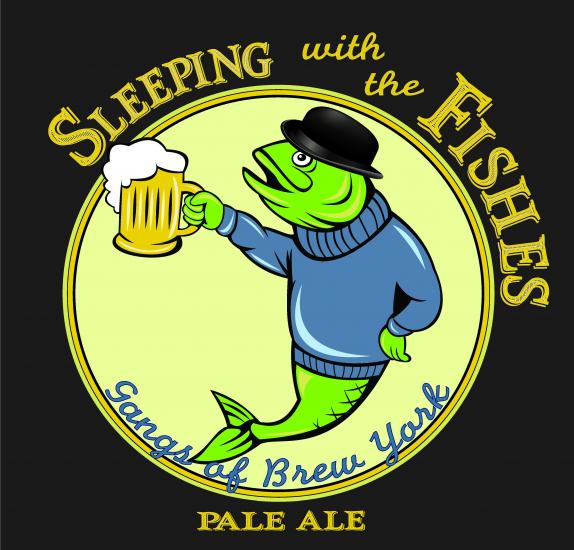
This is an expanded version of the Editorial that appears in the December 2018 issue of CEP.
Beer brewing is inherently a chemical engineering process. The basic process of malt extraction, hops addition, and fermentation requires some knowhow in reaction engineering, separations, and temperature and stoichiometry control. Brewing recalls classic chemical engineering subjects such as thermodynamics, fluid dynamics, and biochemistry.
Although brewing beer calls on my chemical engineering training, I was most excited to get involved in the 2018 AIChE Beer Brewing Competition (ABBC) because of my love for beer. In September, AIChE employees decided to start a staff team to join the action, though most of us (myself included) had no brewing experience. Of the dozen staff members on the team, only a few had ever participated in any kind of beer brewing process, and only one person had brewed a beer from start to finish.
The beauty of beer brewing is that you can make it as complicated or as simple as you would like. You can brew with malt extracts or with whole grains. You can purchase homebrew kits that come with everything you need to brew a specific type of beer, or you can create your own recipe using a custom combination of grain, yeast, and hops. You can spend thousands of dollars on vessels, complex process control systems, temperature sensors, pumps, and heat exchangers, or you can purchase basic homebrewing equipment for around $200.
As amateur homebrewers, the AIChE staff team chose the simplest route — using malt extracts and starter yeasts from a pre-existing pale ale recipe, and slightly modifying it with a unique blend of hops. I was surprised that sanitizing all of our equipment and brewing the beer took only a few hours. We allowed the beer to ferment for around two weeks, and then we used priming sugar during the bottling process to carbonate the beer. In total, it took us less than a month to create 41 bottles of drinkable beer.
The team hit a few snags along the way. For the amount of beer that we were brewing (around 5 gallons), we should have added around 40% more malt extract. As a result, the pale ale had a very low alcohol by volume (ABV) — only 2.39%! (In comparison, Bud Light has an ABV of 4.2%.) The malt extract provides the sugars that the yeast converts into alcohol — without those extra sugars, the yeast couldn’t do its job.
The bottling process was a little bumpy as well. We didn’t have a good way to filter the beer as we hand pumped it from the fermenter to the bottling bucket, so many of the solids that were in the bottom of the fermenter were entrained into the bottling bucket. This meant that some of our finished bottles had solids in them.
Despite these setbacks, we moved forward and entered the beer into the competition. I helped to design a logo for the beer and another team member created a poster to describe our brewing process, which was a requirement for the competition. We named our team the Gangs of Brew York and decided to call our beer the “Sleeping with the Fishes Pale Ale.”
The actual competition took place in Pittsburgh, PA, on October 28th, during the AIChE Annual Meeting. This year, 12 teams from across the U.S. competed. Teams were judged on the taste of their beer, which made up 80% of the overall score, and their poster presentation, which made up 20% of their score. Eight Beer Judge Certification Program (BJCP) official judges evaluated the taste of the beers in a blind taste test, while AIChE professional members scored the posters.
For the second time, Team MMAIChE from the Mid-Michigan Local Section took home the grand prize. The taste of their Saison and the quality of their poster allowed them to edge out the team from the Pittsburgh local section, who crafted the second-place “BrewsBurgh Milk Stout.” A few dozen guest judges sampled the unlabeled beers and voted for their favorite, granting the BrewsBurgh Milk Stout the People’s Choice Award. Awards were also given to the teams with the highest brewhouse efficiency, best beer name, and best poster presentation.
The AIChE staff team took home two awards, the award for the lightest weight beer and Best Beer Label (check out our beer label below). Because teams must be formed through an active local section, the ABBC is a good way to get young professionals more involved in local sections. And, it’s a great way to demonstrate how chemical engineering plays an integral part in the things we love, like beer!
Emily Frangenberg, Managing Editor

Copyright Permissions
Would you like to reuse content from CEP Magazine? It’s easy to request permission to reuse content. Simply click here to connect instantly to licensing services, where you can choose from a list of options regarding how you would like to reuse the desired content and complete the transaction.
